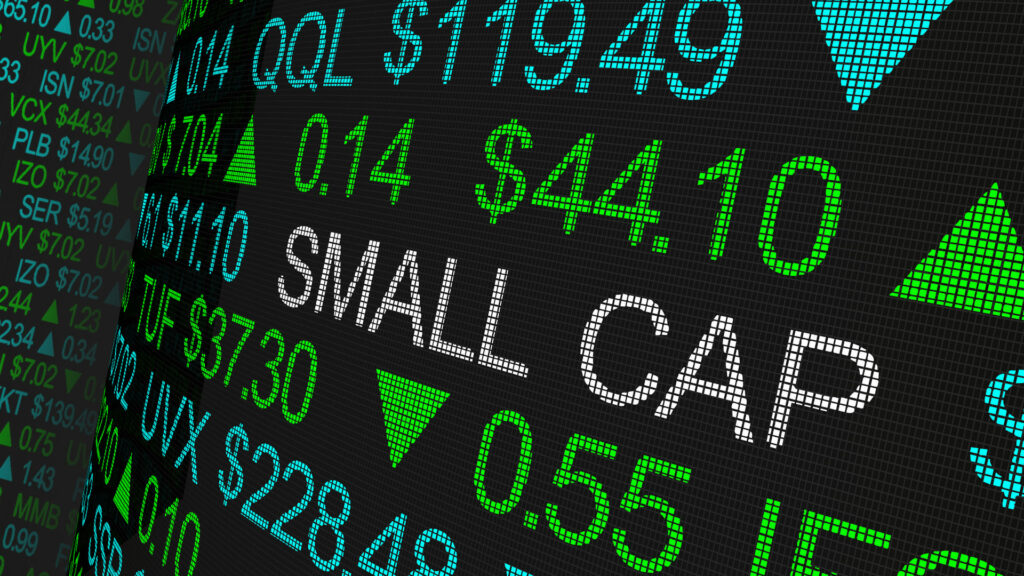What is market capitalization?
Market capitalization is one of the most critical indicators of a company's financial condition. According to the official market capitalization definition, it is calculated based on the total value of all its outstanding assets (including publicly traded and restricted shares held by company management or insiders).
What does market cap mean to investors? First off the bat, this metric helps them make financial impact decisions regarding the company's prospects and return on investment. The market cap also makes it easier to group companies by size when forming indices in the stock market (e.g., Russel 2000 or S&P 500) and various rankings.
As a rule, the title “large-cap company” adds reputation points to any business, but in practice, most companies belong to the medium, small, or micro market capitalization rate. So let's break down in figures the existing levels at which companies get ranked:
- mega-capitalization: the market value of a business starts at $200bn
- large capitalization: market value ranges from $10 billion to $200 billion
- mid-capitalization: market values start at $2bn and end at $10bn
- small capitalization: market values range from $250 million to $2 billion
- micro-capitalization: market value of less than $250 million.
Many fledgling investors tend to believe that the higher a company's stock price, the more successful it is and the more they will earn in funding it. However, the most important metric when evaluating a company is the number of shares in market circulation. To illustrate, here is an example. We have Company A, and Company C. The shares of both companies trade at $50 each, but Company A has 10 million shares outstanding, and Company C has 10 billion shares in circulation. Consequently, Company C's capitalization is larger than Company A's – the former is at the mega level and the latter is at the medium level.
What is the crypto market cap?

Cryptocurrency market capitalization is almost no different from classical market capitalization. The only difference is that cryptocurrency market capitalization is an indicator of the overall market situation for many investors. Thus, the more cryptocurrencies with a high capitalization, the more buoyant the market is. It's the same the other way around – if a few large-cap companies are in a downturn, it means you need to be extra cautious.
That said, cryptocurrencies get divided into the same levels of capitalization as traditional businesses: mega-capitalization, large capitalization, mid-capitalization, small capitalization, and micro-capitalization.
Many also believe that the price of a particular cryptocurrency determines its value and prospects. Simultaneously, capitalization reflects the accurate picture and opportunities for future growth of a specific coin's value. You can find current values for any currently available cryptocurrencies, from Litecoin to Tether or Ethereum, on dedicated online capitalization tracking websites like CoinMarketCap. A special flexible calculator is also available there.
How to calculate market cap

Calculate market capitalization as follows:
The current price per share * Total number of outstanding shares = Market capitalization of the company
Let us assume that company N has 20 million shares in circulation; each share is worth $100. Based on the market capitalization formula calculation, the company has a capitalization of $2 billion. On the other hand, Company G has a share price of $1000 per share but only a total of 10,000 shares in circulation. Despite the outward attractiveness of these figures, the market capitalization of G, according to the formula, is only $10m. Consequently, the position of Company N is significantly higher than that of G.
However, suppose a company is only in the start-up phase and has not yet had time to float its shares. In that case, its market cap gets calculated another way, using an initial public offering, i.e., IPO. Before the IPO, a company that intends to go public sends an application to an investment bank, asking it to estimate its estimated value using banking methods and determine how many shares it can sell to the public and at what value.
If, for example, the investment bank estimates the value of the company's IPO at $100 million, the company has several options: it can introduce 10 million shares at $10 each or issue 20 million shares at $5, which would be equivalent. In either case, the company's market capitalization at launch would be around $100m.
But how is the cryptocurrency market cap calculated? The formula looks similar but has different variables: supply and prices play a significant role here because the lower the cryptocurrency stocks, the higher the demand for it and the higher its value. However, an ordinary high-value coin can also have a high capitalization, even if there is a surplus in circulation. In short, the crypto market cap is much more challenging to evaluate due to the market's volatility and instability, so carefully consider each case individually.
The universal formula is as follows:
The current value of coin * Current supply = Total crypto market cap
Thus, the market cap of Dogecoin (yes, that's right, the meme cryptocurrency with Shiba Inu on its logo) is $13.9 billion because its face value is at 0.0996, and there are more than 137 billion coins in circulation.
A diluted market cap

Another way to measure the potential value of a cryptocurrency is to calculate its fully diluted market cap. Let's see what it is and how it differs from a regular market cap.
So, the diluted market cap is the total value of a cryptocurrency at the current moment if the entire supply of that cryptocurrency were in circulation. Let's calculate the Bitcoin market cap, for example. As we know, with each new solved block in the BTC blockchain, new coins are minted (generated). As we know, the maximum quantity of BTCs worldwide is 21 million. So, to calculate the diluted market cap, we need to imagine that all these coins are currently in circulation. Then the formula is as follows:
21 million * the current price of 1 BTC
Diluted market cap is always considered in conjunction with total market capitalization because the difference between them allows us to estimate the relative popularity and ranking of the actual demand for a particular coin on the cryptocurrency market. Investors can also use diluted capitalization as an additional criterion to evaluate a cryptosystem before investing. However, exercise caution here because you must not consider diluted capitalization in isolation. For instance, a new cryptocurrency could artificially increase diluted value by simply raising the allowable limit on the number of coins in circulation.
The top crypto by market cap

Based on market capitalization data as of early December 2022, we have compiled for you the top five cryptocurrencies in gradation from having the largest to smallest capitalization:
1. Bitcoin (BTC)
Market cap – $315.4 billion
Bitcoin was founded in 2009 by a mysterious developer (or a whole group of anonymous developers, as some legends say) under the alias of Satoshi Nakamoto. Most people regard BTC as the original cryptocurrency, i.e., the very first and unique one. On its basis, altcoins (other alternative cryptocurrencies) were subsequently launched. Like most other cryptocurrencies, BTC is based on blockchain technology, a kind of “ledger”, where all transactions and operations made on the network are recorded without rights to be removed or changed. The data is distributed among thousands of computers, creating a decentralised system in which all participants in the network are given equal opportunities and rights with no chance of domination. In turn, new coins get mined by solving a cryptographic puzzle called Proof-of-Work. It is also what gives Bitcoin protection against hacking and fraud.
To this day, Bitcoin is the most sought-after, famous, and expensive cryptocurrency in the world: as of May 2016, the value of 1 BTC was only $500, compared to $16,400 in November 2022. At the same time, the historical high that Bitcoin has reached is $67,000.
2. Ethereum (ETH)
Market cap – $147.9 billion
The currency ETH, developed by Russian programmer Vitalik Buterin and launched in 2015, has been called a competitor to BTC. It is easily explained by its lucrative applications, such as smart contracts and NFTs. On top of that, ETH has experienced tremendous growth of 10,900%: while in April 2016, the price of 1 ETH was only $11, as of December 2022, it is already $1228.
3. Tether (USDT)
Market cap – $65.3 billion
Tether belongs to the Stablecoin category, unlike most other cryptocurrencies, meaning it is a coin whose value is backed by a fiat currency (the US dollar). In theory, this stabilises the currency's value in the market and allows it to hold its position even during periods of general market decline. Therefore, conservative or novice investors often favour Tether because they are unprepared to take risks and are looking for protection against the famous volatility of the crypto market.
4. Binance (BNB)
Market cap – $48 billion
Binance Coin is a cryptocurrency created specifically for transactions on the Binance exchange. In other words, it is for buying other cryptocurrencies and paying fees. Launched in 2017, BNB has now moved beyond being a 'local' financial instrument and is now used everywhere, for instance, for booking travel, buying goods from cryptocurrency marketplaces and even for making transactions. BNB is also traded in pairs with ETH and BTC. The currency has seen incredible growth of as much as 300,000% since its inception: in 2017, one BNB was worth $0.10, but today it exceeds $300.
5. USD Coin (US Dollar Stablecoin)
Market cap – $44 billion
Like Tether, USD Coin (or USDC) is a stablecoin, a coin backed by the US dollar. That means that 1 USDC is equivalent to 1 US dollar. The USDC is based on Ethereum's blockchain and can be used to make any global transaction.